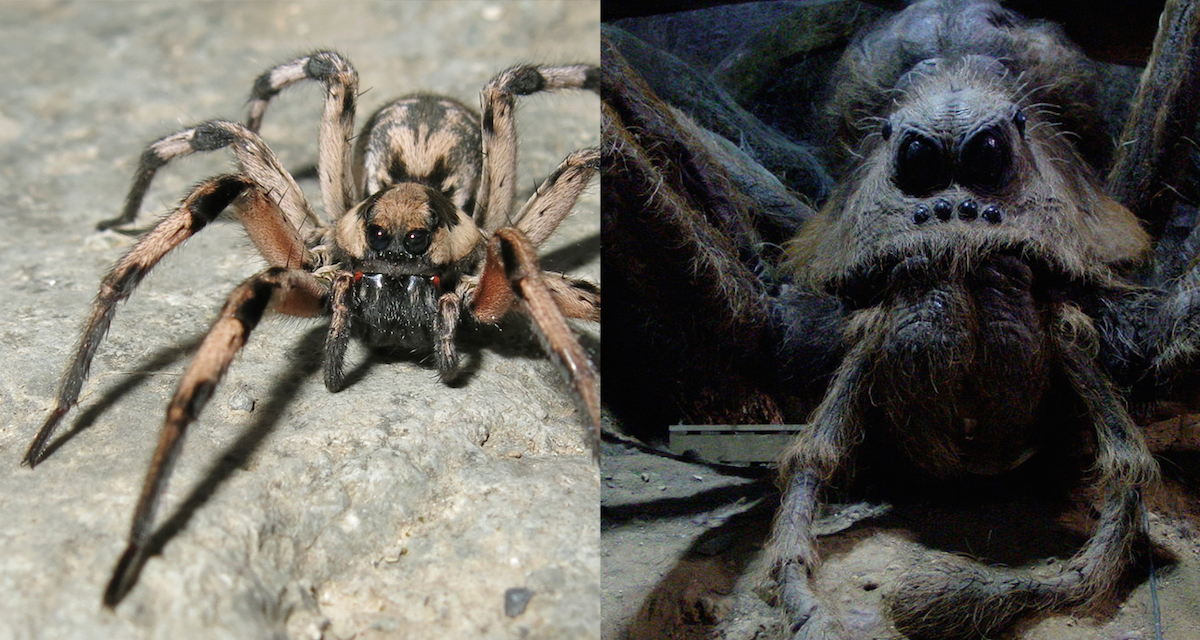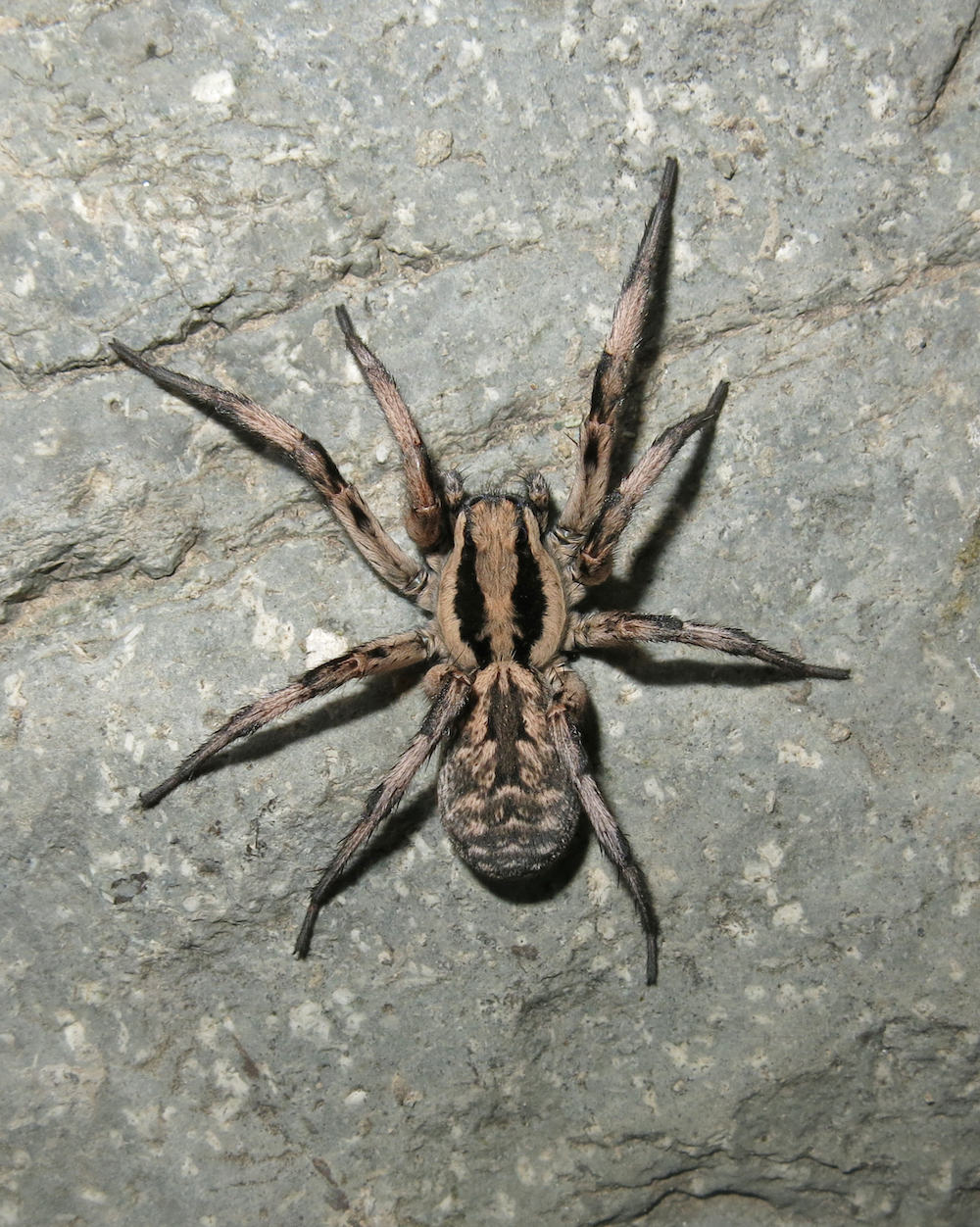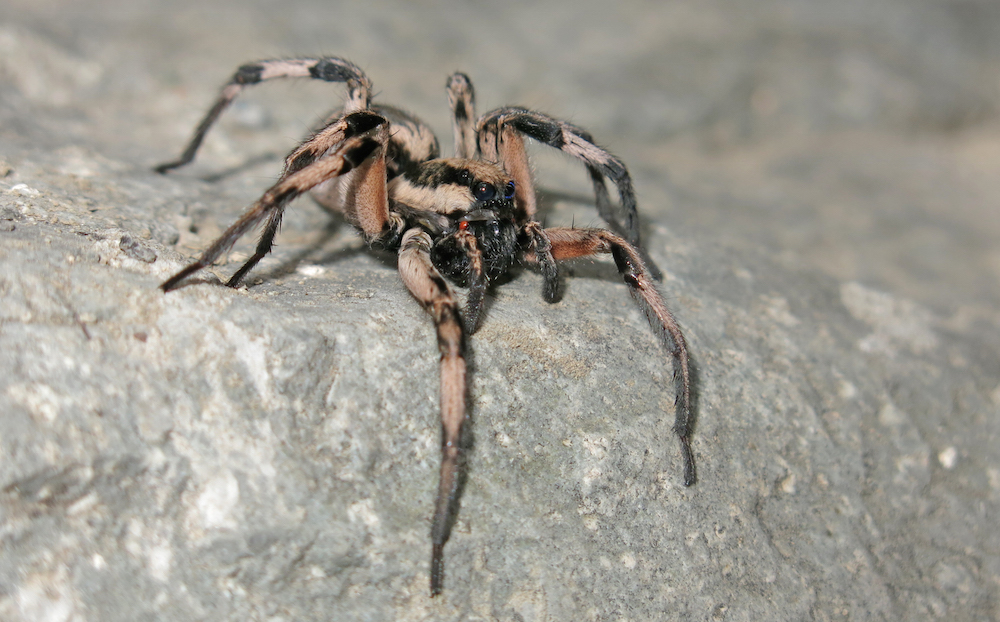Furry 'Harry Potter' Spider Discovered in Mountain Burrow

A newly identified wolf spider looks so much like Aragog, the giant, fictional spider from the "Harry Potter" series, that the creature is being named after the colossal arachnid, a new study reports.
The naming opportunity was too good to pass up, the researchers said. The animatronic puppet created for the movie "Harry Potter and the Chamber of Secrets" was based on the anatomy of a wolf spider, said study co-researcher Alireza Zamani, a graduate student of animal biosystematics at the University of Tehran in Iran.
"We found out that there was an extreme similarity between our spider and Aragog as he was depicted in the second film," Zamani told Live Science in an email. "Since it was also the 20th anniversary of the whole 'Harry Potter' series, we thought it might be a good idea and celebration of this wonderful franchise" [to name the spider after Aragog]. [In Photos: A Bevy of Magical 'Fantastic Beasts']
Iranian entomologist Alireza Naderi spotted the newfound spider near its burrow in a mountainous region of southeastern Iran's Kerman Province. Zamani noted that Naderi found the spider (a female — the researchers have yet to find a male) on April 26, 2016, almost 19 years to the day after Aragog died (April 20, 1997 in the world of the book), according to the "Harry Potter" series, by J.K. Rowling.
Researchers named the newfound spider Lycosa aragogi. It has a 1-inch-long (2.6 centimeters) body (excluding the legs), with two black and three white stripes of setae, or hairs, on its upper body, known as the cephalothorax.
The arachnid also has black setae on the appendages by its mouth, "giving the spider a charismatic look," while its abdomen is covered with black and white setae, said Zamani, who co-wrote the study with Anton Nadolny, a taxonomist who specializes in spiders at the Institute of Marine Biological Research of Russian Academy of Sciences in Sevastopol, Russia.

Zamani noted that large wolf spiders don't build webs, but rather are known as "wandering spiders" that stay in their burrows during the day and hunt at nighttime, stalking their prey. Most live for about three years, he said.
Sign up for the Live Science daily newsletter now
Get the world’s most fascinating discoveries delivered straight to your inbox.
Large wolf spiders have good eyesight compared to most other spiders. Four of a wolf spider's eight eyes have a layer of tissue known as an iridescent tapetum behind the retinas. "After the light shines into the eye, it reflects from the tapetum back onto the retina, making the eyes shine in the darkness, similar to what we observe in some other animals, like cats," Zamani said. "This helps arachnologists to collect them [the spiders] at night, using a torch [flashlight] located at our eye level."
Large wolf spiders also exhibit a great degree of maternal care: They carry their egg sacs on their bodies and periodically expose the developing spiders to light and heat from the sun for better development, Zamani said. Once the spiderlings are born, the mother keeps them on her back and feeds them for the first few weeks.
This nurturing behavior isn't so different from that of Aragog, who "loved his colony of 'Acromantulas' [a fictional species of spider] so much he wouldn't stop them from devouring Harry Potter and Ron Weasley," Zamani said.
Even though Aragog is considered as an antagonist in the series, "I consider him as family-loving and loyal, as he wouldn't harm his ex-owner Rubeus Hagrid," Zamani said.
The study was published online July 4 in the journal Zootaxa.

Original article on Live Science.

Laura is the archaeology and Life's Little Mysteries editor at Live Science. She also reports on general science, including paleontology. Her work has appeared in The New York Times, Scholastic, Popular Science and Spectrum, a site on autism research. She has won multiple awards from the Society of Professional Journalists and the Washington Newspaper Publishers Association for her reporting at a weekly newspaper near Seattle. Laura holds a bachelor's degree in English literature and psychology from Washington University in St. Louis and a master's degree in science writing from NYU.









